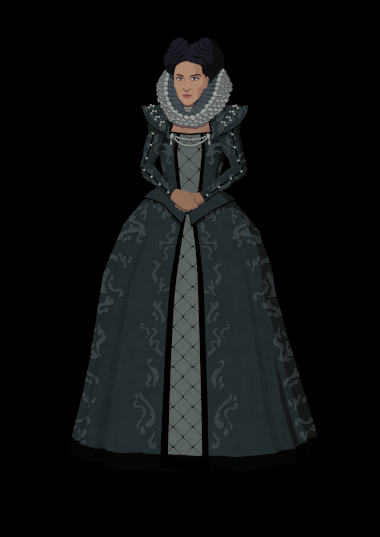by Pamela J. Benson author of The Invention of the Renaissance Woman, Penn State Press, 1992, and editor (with Victoria Kirkham) of Strong Voices, Weak History: Early Women Writers and Canons, University of Michigao Press, 2005.

No confirmed representations of Emilia Lanier from her lifetime exist. This is how she is depicted in Astrologaster, a computer game inspired by Forman’s casebooks. Artist: Adam Clark. Copyright Nyamyam Limited from the game Astrologaster.
Emilia Bassano Lanier (alt. spelling: Aemilia Lanyer, 1569–1645) was a remarkable woman. In an age when few English women were educated or in charge of the conduct of their lives, she was learned and independent; she aggressively pursued social advancement and financial support. She is celebrated today because she was one of only a handful of Elizabethan and Jacobean women to write and publish an original literary work. Her Salve Deus Rex Judeorum volume (1610/11) includes the long title poem addressed to Margaret, Countess Dowager of Cumberland, in which Lanier retells the story of the Passion of Christ and invites Cumberland and all readers to meditate on the event; this narrative is prefaced by nine elaborate dedicatory epistles (all but two in verse) addressed to and in praise of the queen, princess, and noblewomen of the highest rank, and the volume closes with ‘The Description of Cooke-ham’, the first published country house poem in English, in which Lanier praises an estate at which Cumberland resided temporarily and Lanier served in some unspecified familiar capacity. The volume was an attempt to stimulate the Countess and other great ladies to support Emilia or her husband financially or to employ one of them. After she was widowed, Emilia ran a school for ‘gentlemen’s children’, as she put it in a legal petition defending herself against her landlord’s accusation that she had not paid the rent for the property. She again resorted to the courts when, still later, she repeatedly petitioned for redress against her deceased husband’s brother who was not paying her a legally mandated annuity that, she said, she needed to support her grandchildren, whose father and mother had died.
All this was in the future when Lanier consulted Forman in 1597. Then, she was the 27 year old mother of a young son, Henry (c. 1593–1633), and wife of Alfonso Lanier (c. 1561–1613), a professional musician who played in the recorder consort at the court of Elizabeth I but at that time was away from home with the Earl of Essex on his ‘Islands Voyage’ against the Spanish fleet. Like Alfonso, Emilia came from the small world of court musicians. She was the daughter of Baptista Bassano, who, along with his four brothers, was brought from Italy by Henry VIII to found the consort in which Alfonso later played. Her mother, Margaret Johnson, most probably was also a member of a family of musicians. Both parents were dead by the time Lanier consulted Forman; their wills suggest that she was financially secure when she married in 1592, but her statements to Forman, her attempt to secure patronage by means of the dedications in her volume of poetry, and her various lawsuits make it clear that as a wife and a widow, she often felt herself to be in financial difficulties, and, according Forman’s notes, she was worried about money at the time of her consultations with him.
Financial need, social ambition, and her husband’s absence were the key factors in Lanier’s contact with Forman. She consulted him five times from May through September 1597 because she wanted to know whether Alfonso would be knighted and she, thus, made a lady, as a reward for his service with Essex. Forman diligently sought an answer to that question; he predicted that Alfonso would be rewarded, but, in fact, he never was. Forman’s notes reveal, however, that, seemingly from the moment Lanier entered his study, Forman had a personal agenda: he was sexually attracted to her and wanted to find out whether she was the kind of woman who would be open to a sexual relationship, so, in speaking with her, he used a method that he used with women when he wanted them to reveal truths about themselves that they were hiding. In his Astrologicalle Judgmentes, he explains that if he suspected that a female client had secrets about her past, especially sexual secrets, he would focus his investigation of the figure on sex, and if the figure discovered the woman to be ‘a whore’, for example, he would share that insight with the client, who would be provoked to respond with the truth (or what he accepted as the truth) (MS Ashmole 363, ff. 138v-140v, paragraph 1930).
The page of Forman’s casebooks including Emilia’s 17 May 1597 visit, her first extensive consultation, exemplifies his technique (MS Ashmole 226, f. 95v). Through Forman’s notes, we witness Emilia responding to his insulting prompts and encouraging his interest in her by constructing an image of herself as an elegant, sexually sophisticated, potentially available woman. The folio has two horary figures. Under the left-hand one, Forman recorded what the figures revealed about four distinct topics: Emilia’s sexual past, her attitude toward this past, her financial situation in her youth, and her current health. Forman’s inclusion of the astrological notations that were the basis for his statements shows that this information derives from the figure; for example, ‘She hath had a child in fornication except Jupiter in 7 did let it [i.e., prevent it] et sodomita’ (that is, it is probable but not certain that she had an illegitimate child and engaged in unconventional sexual practices). By contrast, the notes under the right-hand figure make no reference to the figure but rather record the narrative of her life that Emilia provided in response to Forman’s provocative statements. The ugly, demeaning, and imprecise assertion that she ‘had a child in fornication ... et sodomita’ prompts the glamorous, self-aggrandising claim that ‘She was paramour to my old L. of Hunsdean that was L Chamberline and was maintained in great pride and yt seams that being with child she was for collour married to a minstrel.’ Encouraged by the information about her sexually active past that he elicited from her and by invitations to her home in her husband’s absence and aware of her financial anxieties, on 2 September, Forman concluded that ‘for Lucrese sake’ (‘lucre’ being money) ‘she wilbe a good fellowe for necessity doth compell’ (MS Ashmole 226, f. 201r). He decided to pursue her, and, in the months following Lanier’s consultations, he three times drew horary figures for himself, attempting to find out whether and when to visit her to follow up on her advances and noted the results of his attempts: she permitted extensive intimacy but never consented to ‘halek’ (his term for intercourse); whether this was because Forman did not offer enough ‘lucre’ or because intercourse was never her intention, the casebooks do not reveal. The relationship seems to have ended on a sour note; by 25 November, Forman was trying to decide whether to end the relationship and two years later, he wondered why ‘she sent for me and ... where she entende any mor villani or not’ (MS Ashmole 236, f. 5r).
Thanks to Forman’s sexual interest in Lanier, the notes on the consultations include substantial biographical information about her past and can help to fill in the story of her youth if read with knowledge of Forman’s methods and with a certain scepticism since all the details come from Emilia herself and none are substantiated by external sources. She made three major claims about her past to Forman: that she was ‘brought up’ by the Countess of Kent; that Hunsdon ‘kept her longe’ and her marriage with Alfonso was a cover for her pregnancy by Hunsdon; and that she was rich at the time of her marriage because Hunsdon, other noblemen, and even the queen rewarded her with jewels and money. It is possible that she did have some position in Kent’s household (she makes the same claim in her epistle to the countess in the Salve Deus volume) — perhaps as the young children’s music instructor, given her family background — and there received an education that helped to prepare her to write her book, even though Kent’s household accounts nowhere mention her. Similarly, it is probable that Lanier had a sexual relationship with Hunsdon, but the phrases she uses to describe it do not necessarily indicate the prestige and exclusivity that modern scholars have attributed to it, though they do suggest Emilia’s pride in the relationship; identical language is recorded in depositions of prostitutes for whom ‘long’ seems to mean weeks and ‘kept’ can mean the gift of clothing or the provision of a room for a few weeks in a brothel. That Lanier’s son Henry was the fruit of this relationship has often been inferred from Forman’s note because Hunsdon’s name also was Henry, but Lanier does not make this claim, and the fact that Hunsdon did nothing for Henry mitigates against its probability since he legitimated Valentine Carey (bishop of Exeter, d. 1626), another son born out of wedlock by a different woman. Lanier’s third claim — that many noblemen gave her gifts — suggests that her sexual arrangement with Hunsdon was not exclusive. Her revelations about her active sexual life at court, her connection with Hunsdon, who was the patron of Shakespeare’s acting company, and her origin in a musical Italian family (presumably dark haired) led A. L. Rowse, the historian who discovered her in Forman’s casebooks, to develop the delightful fiction that she was the virginal-playing Dark Lady of Shakespeare’s sonnets. Neither the casebooks nor the use of their relationship as a case study in his manuscript on the art of geomancy (‘De arte geomantica’, MS Ashmole 354, ff. 246r, 250r, 252r, 252v), however, provide any evidence whatsoever of a connection between Emilia and Shakespeare; this theory is almost universally rejected.
The consultations
13 May 1597. On this first visit, Forman created no figure and made no notes. The heading incorrectly states her name as Millia and her age as 24 (she was 27); it gives her address as Longditch at Westminster and states the reason for her visit to be a ‘questo’.
17 May 1597. The entire page with two figures in two columns is devoted to Emilia. No reason for the visit is noted. There are many oddities here. The only heading, above the left column, treats her as a single woman by identifying her by her maiden name Bassana and describing her as the daughter of Baptista Bassane and Margarete Jhonson, rather than stating her married name and including her maiden name as an ‘alias’, as Forman typically does. ‘Alfonso Lanier’, is awkwardly inserted in the margin without any indication of their relationship. Here Emilia’s age is correctly stated as 27. The title ‘for her life past’ at the head of the right column seems to apply to both columns, since, except for a few concluding medical notes, the information on the left, derived from the astrological figure, concerns her past life and her attitude towards it and the notes on the right consist of her claim to have had a relationship with Hunsdon and to have been married for colour. These peculiarities suggest that Forman was using this consultation to inform himself about Emilia’s character and circumstances rather than to directly answer whatever ‘questo’ she brought to him on her previous visit.
3 June 1597. In this entry, Forman identifies Emilia by her married name and notes that she inquired ‘Wher her husband shall have the suet’ and consulted him asking about her health. He predicts ‘he shall ... but shalbe first in despaire of it’ and diagnoses a pregnancy of ‘12 daies or 12 weeks’ but predicts a miscarriage, noting twice, ‘she hath mani false conceptions’, though this may be Emilia’s confirmation of his prompt. The note also details the financial rewards of her relationship with Hunsdon — he ‘maintained’ her ‘in great pomp’, she was ‘welthy ... in money and jewells’ when she married, and she ‘hath 40 pounds a yere’, information clearly provided by a bragging Emilia — and provides impressions of her character that Forman may have discovered in his figure or, perhaps, simply observed — she is ‘hie minded [haughty]’, ‘hath something in her mind she wold have don for hir’, and ‘can hardly keep secret she was very brave [splendid in appearance] in youth’. The note concludes with the statement ‘she hath a son his name is henri.’
16 June 1597. At this visit, Emilia inquired whether her husband would gain any preferment before coming home and whether he would come home again at all. Forman’s answer: he would ‘have worship and ... preferment ... but shalbe in perill of his life before this.’ The figure is on the left but the answer is on the right.
2 September 1597. At this visit, Emilia asked about her own future — ‘wher she shall be a ladi and how she shall speed.’ Forman drew two figures; a lengthy answer to the question is under the right geomancy one: Alfonso will be knighted but not get much financial benefit, she will be a lady or attain greater dignity, Alfonso will not live two years after he returns, and she will have good fortune soon. Most of the left column follows up on Emilia’s self-aggrandising of 3 June. Now, not just Hunsdon but her majesty and many noblemen ‘favored’ her and gave her ‘gret giftes’ but, contrary to her 3 June claim of a good annual income, Forman notes her assertion that her husband has spent her money and she is needy and in debt. Forman draws the conclusion that ‘it seams for lucrese sake wilbe a good fellowe for nesessity doth compele.’ The column ends with what might seem to be a genuine piece of information about her appearance, ‘she hath a wart or moulle in the pit of the throte or near yt’, but the imprecision makes it seem that he learned this from the figure rather than observation of her person. (See also: ‘De arte geomantica’, MS Ashmole 354, f. 246r, where Forman uses Emilia’s question as a case study.)
10 September 1597. This is the first of Forman’s inquiries on his own behalf. He asks whether Emilia would receive him and halek, if he were to go to her that night or the next, but he records no answer.
11 September 1597. Forman asks whether he should send to Lanier to see whether she will see him and what will come of it. He records that he did send, was welcomed, stayed all night but ‘could not hallek’. (See ‘De arte geomantica’, MS Ashmole 354, f. 250r, where Forman describes his experiences that evening in great detail.)
17 September 1597. Forman drew a geomancy figure to figure out whether to respond to a summons from Lanier. He noted, ‘She seemed a freind and is not so.’
29(?) September 1597. It is unclear whether this note is the record of a visit by Emilia or is an aborted inquiry by Forman on his own behalf as the entire entry consists of her name and ‘daughter of Baptista x margaret Bassana.’
[Forman’s ‘De arte geomantica’ includes questions about his sexual relations with Lanier on 23 September and 20 and 29 October 1597.]
25 November 1597. This entire entry consists of an unanswered question half in Forman’s cryptic Latin and half in English. He is distressed, worried about impending trouble (‘turba’), perhaps from Lanier’s invocation of spirits, and undecided about ending the relationship.
7 January 1600. On this date, Alfonso was again away with Essex after a period at home and Forman says that Lanier sent for him. He asks why she has done so and ‘wher she intende any mor villani or noe.’ He does not answer his question, and this is the last entry about Emilia in Forman’s casebooks.
References
- Benson, Pamela J. (1999), ‘To Play the Man: Aemilia Lanyer and the Aquisition of Patronage’, in Opening the Borders: Inclusivity in Modern Studies, ed. Peter C. Herman, Newark, DE: University of Delaware Press, 243–64; reprinted in Ashgate Critical Essays on Women Writers in England, 1550–1700: Volume 3, ed. Micheline White, Farnham, Surrey: Ashgate, 401–422.
- Benson, Pamela J. (2018), ‘Aemilia Lanyer’s Radical Art: “The Passion of Christ”’, in A History of Early Modern Women’s Writing, ed. Patricia Phillippy, Cambridge: Cambridge University Press, 205–220.


